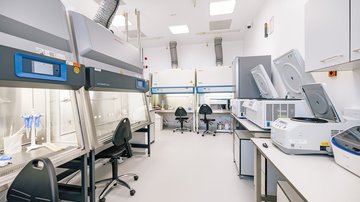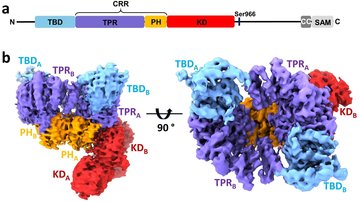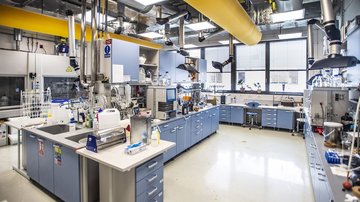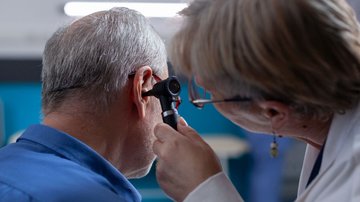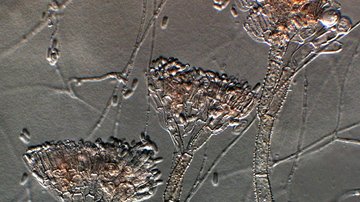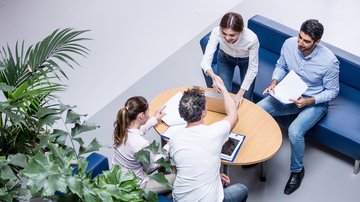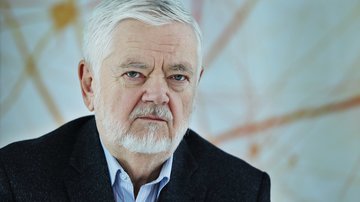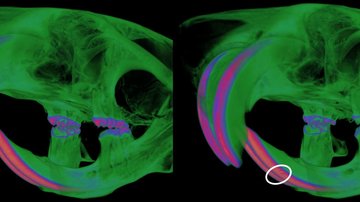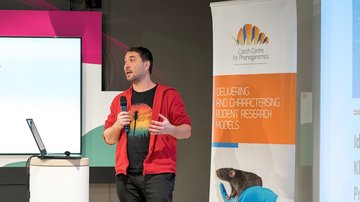
Thanks to mice, scientists at the Czech Academy of Sciences identified, for example, the gene behind retinal degeneration
Just turn off a gene in a mouse and you will learn which gene could be responsible for one of the diseases in humans. In the next part of our series on the 70th anniversary of the modern Czech Academy of Sciences, we will introduce you to genetically modified mouse models that help reveal the causes of human diseases. At the Czech Centre for Phenogenomics (Institute of Molecular Genetics CAS at the BIOCEV Centre), scientists examine them literally from head to toe.
"We will pass through the so-called air shower, this is the last instance before the barrier in which the experiments are carried out," describes Radislav Sedláček from the Institute of Molecular Genetics of the Czech Academy of Sciences. Together with him, we stand in special suits in front of two strong, glass doors. Behind them, everything is already sterile.
We find ourselves in the central corridor and on each side there are breeding rooms. Ahead of us are empty mouse aquariums. “These are spares. This is where we put mice when we need them to clean a dirty aquarium. They are made of very resistant plastic and equipped with HEPA filters. The mice are very well protected to stay healthy because we want to study the function of the genes and not their infection.”
In the mouse hospital, hearing and heartbeat are examined
Scientists study the functions of genes in great detail. When creating a mouse model, they most often use the so-called genetic scissors, a method thanks to which they can change the mouse gene or turn it off completely. Then, in a kind of mouse clinics, genetically modified and healthy mouse individuals undergo various examinations.
"Hearing is being investigated here. That's why there is a room similar to a radio station, acoustically soundproofed. It's just a bit smaller. We put about four mice there at a time, they only spend about half an hour there," says scientist Jiří Lindovský.
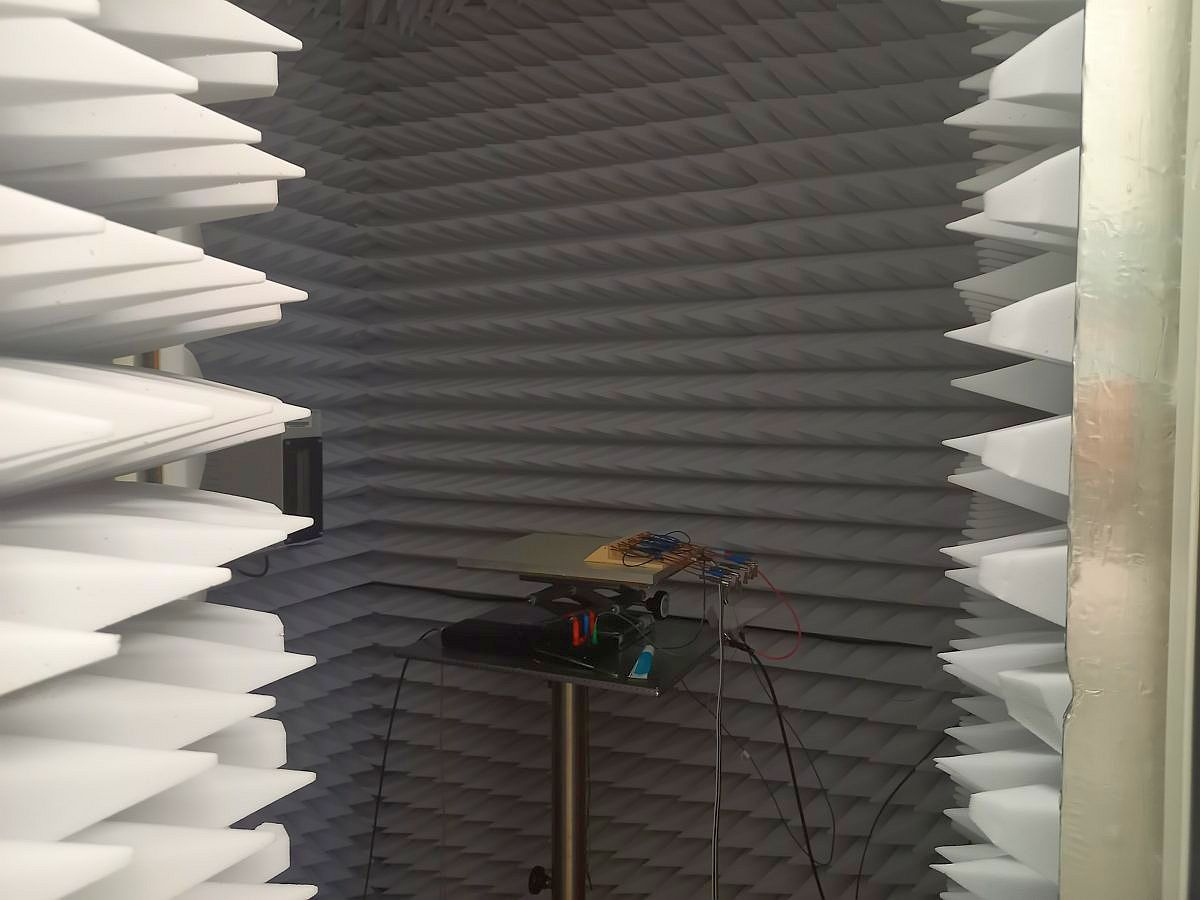
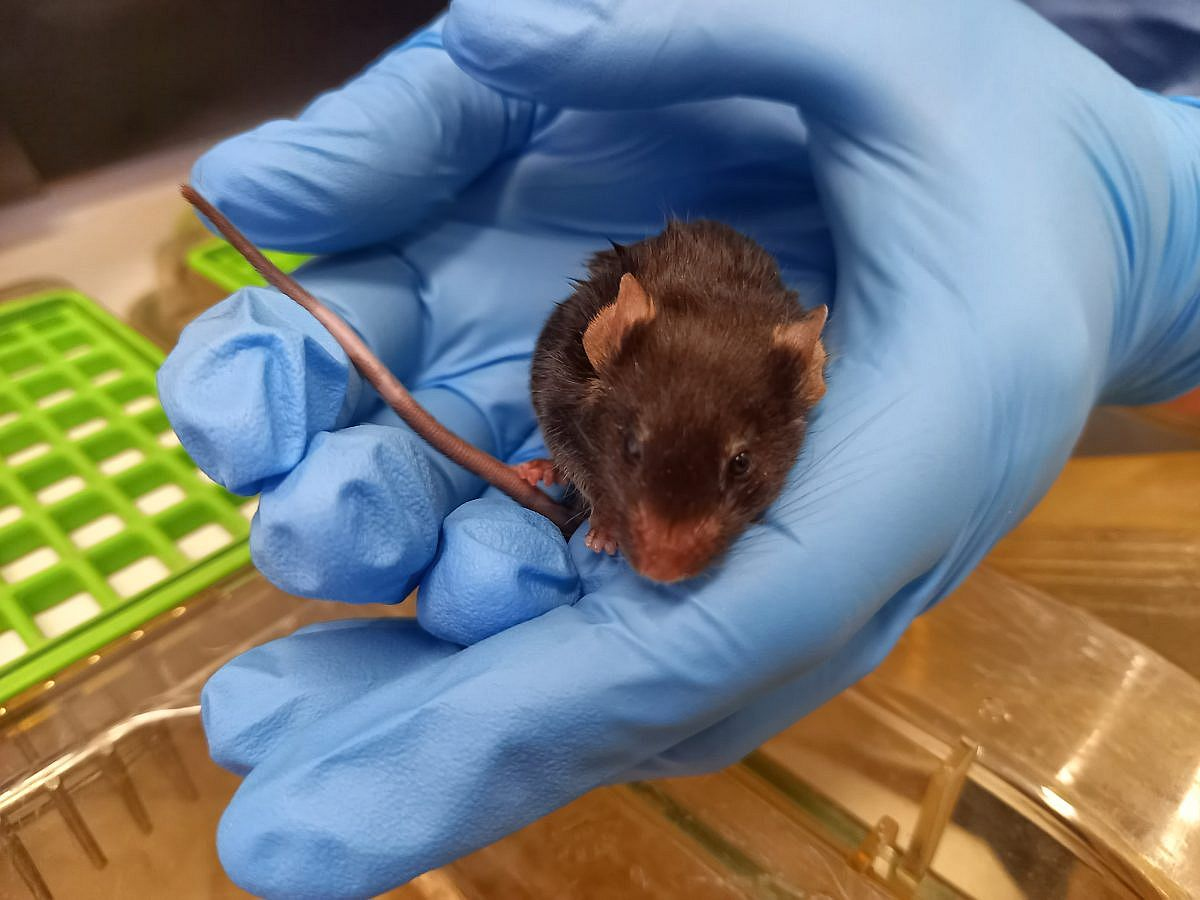
Jiří Lindovský plays the sound from the speakers to the mice. "It's a bit jarring, it sounds like we're in a meadow somewhere. To us, these are relatively high-pitched sounds, but mice's hearing is tuned to perceive higher frequencies, so this is at the lower end of their range."
A few doors down is the cardiovascular unit in another lab. Here the mouse lies asleep under inhalation anesthesia. "On the ultrasound, we can see the blood flow, we can even hear how it beats," explains technician Petr Macek. "We see their vital signs all the time, they even get heated gel, which people often miss. When a person goes to the doctor, they are often stressed by the cold gel. Waking up is very quick, within a few minutes he is already rolling and going to drink."
Writing the functions of a single gene
Radislav Sedláček explains how the examination takes place. "We examine all the important physiological functions, automatically record the data, the software converts the parameters into a book that has, for example, three hundred pages on the functions of that individual gene. The mouse as a model organism has established itself, and we are currently using it to describe the function of all genes not in the mouse, but in mammals, specifically we are interested in the human genome."
For example, Radislav Sedláček's team has already identified a new gene responsible for retinal degeneration or clarified the circumstances of tooth mineralization.
Text and photo: Andrea Skalická, Czech Radio



